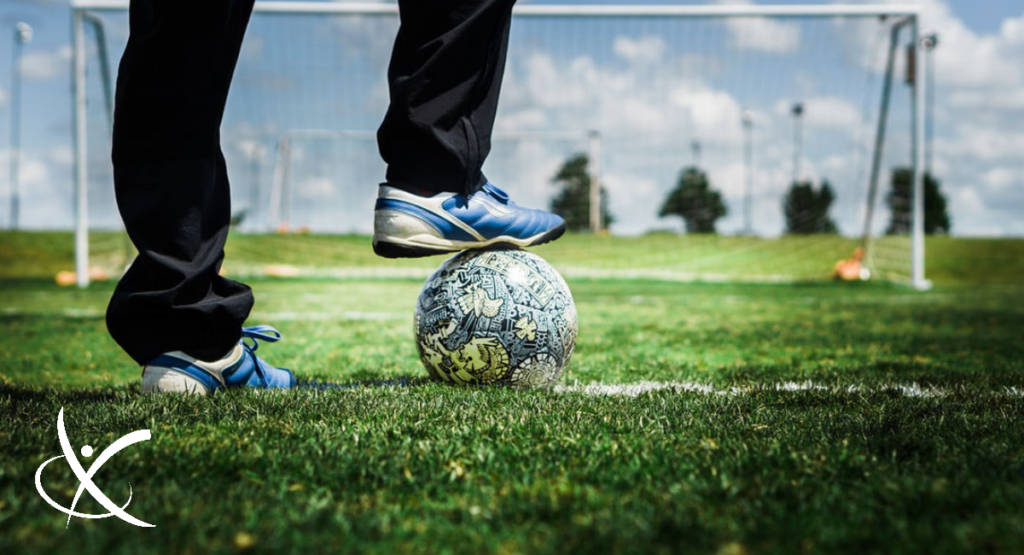“COVID Considerations” for our Fall Athletes
Important tips for re-starting sports in a post-pandemic world
There are two steps to solving any problem. The first is identifying the problem, and the second is presenting possible solutions. Now, it’s crucial to execute step 2 and often people forget that. So this post will serve to identify the potential problem at hand, and the follow up will be to present a possible, and hopefully an intelligent solution.
Why do I think we are going to see a spike in injuries? Well, first I’m talking about a certain population. Our Fall field athletes, both high school and collegiate, are uniquely positioned in the new coronavirus world. Current sports and competitions have been canceled with no playbook to go on. I’m using the Fall as an arbitrary, but probable start date for school and sports. Now, this could all change, but a lot of people are assuming things may start back up in the Fall. And if they do, our athletes won’t be ready, at least they won’t be as ready as they have been in past years. Here’s why.
Normally our field athletes compete year-round in either their sport or multiple sports. Doesn’t matter which for now, all that matters is their bodies are used to being active and staying fit. Competitions and practices maintain physical strength and neuromuscular control. These are two things necessary to stave off injury. Physical strength usually prevents muscular and tendinous injuries, and proper motor control helps prevent some more complex joint or ligamentous injuries. I won’t go into detail, and please don’t pick that apart, its a gross generalization, obviously there is more to the equation that I just made up. Heres the problem, without practices and without games, their bodies’ stress adaptation is dropping off sharply. Normally our Fall athletes have all Spring and Summer to play in their non-school leagues, work on off-season principles, and ramp up with pre-season. Now, they’re missing almost 6-7 months of competition and practice benefits and we will expect them to jump right back into a compact season. Some high schools pack 3 games into a single week. It is too much demand and not enough ramp up time. Essentially, we have to make up a larger gap this year than normal. Players on a normal basis will play 3-5 days a week and then ramp up to 5-6 days a week, but now we may see many of them go from 0-2 days a week (if they are disciplined) to 5-6 days a week, and the intensity or stress adaptations won’t be anywhere near what they usually are because of our current restrictions. Let’s not even discuss the lack of strength training that many athletes depend on because facilities are closed and not everyone has a stout home gym. This is just a reality and it hit me last week.
This lack of adequate training volume coupled with the concept of the acute-chronic workload ratio that I’ve talked about before could potentially be an issue worth addressing. The workload associated with preseason and season will be much greater than what the athletes are experiencing now and that is where the risks increase, whereas in previous years their Spring/Summer workloads were able to closely match the demands associated with the Fall sports. The workload difference was not as great, and therefore the odds were in favor of the athletes. But we are rapidly approaching the time when we should be considering changes to our athlete’s preparations rather than wait till the last minute to give them the green light. If we don’t gradually increase their workload and intensity now over the next few months, and instead allow a very drastic change with the green light of Fall Sports, then we may see that unwanted rise in injuries.
Two things matter here, maintaining an adequate level of competitive stress on the body, and preventing a sharp spike in overall workload. Our goal over the next two months should be finding a way to best help our Fall athletes given what we have to work with. It will take a bit of creativity on the part of the coaches and strength coaches, but I think it’s a task that comes with the territory. I’ve been working with some coaches and players and hopefully, we can find a solution. One possible solution might be to extend pre-season a bit and get workouts to the athletes sooner. Or set new benchmarks for them to meet before they even get to pre-season, almost a right of passage to start training camp. I think it’s worth discussing!
This post was meant to serve as a PSA rather than to spark fear. Injuries to athletes are not new, and neither is the concept of adequate preparation. I’m simply pointing out that this COVID situation may result in a need for special considerations that are not normally present.
Coaches, athletes, parents…what do you think? We want to know your thoughts. This is a team effort and a discussion around this is good!
Thanks for reading, stay tuned for part II.
Cheers,
John
